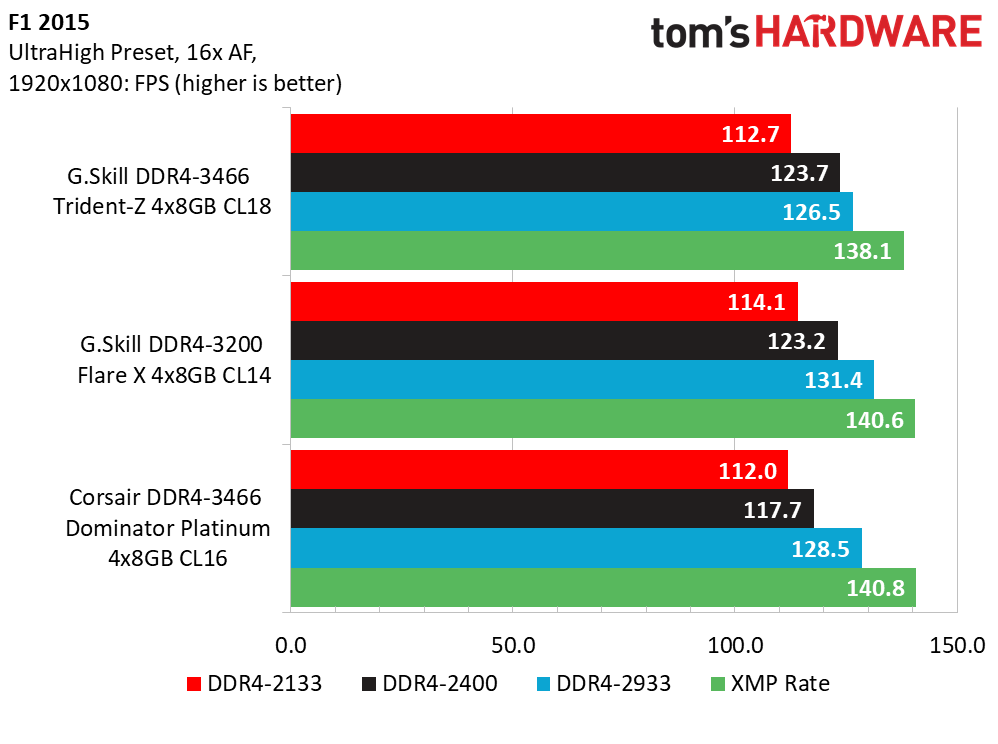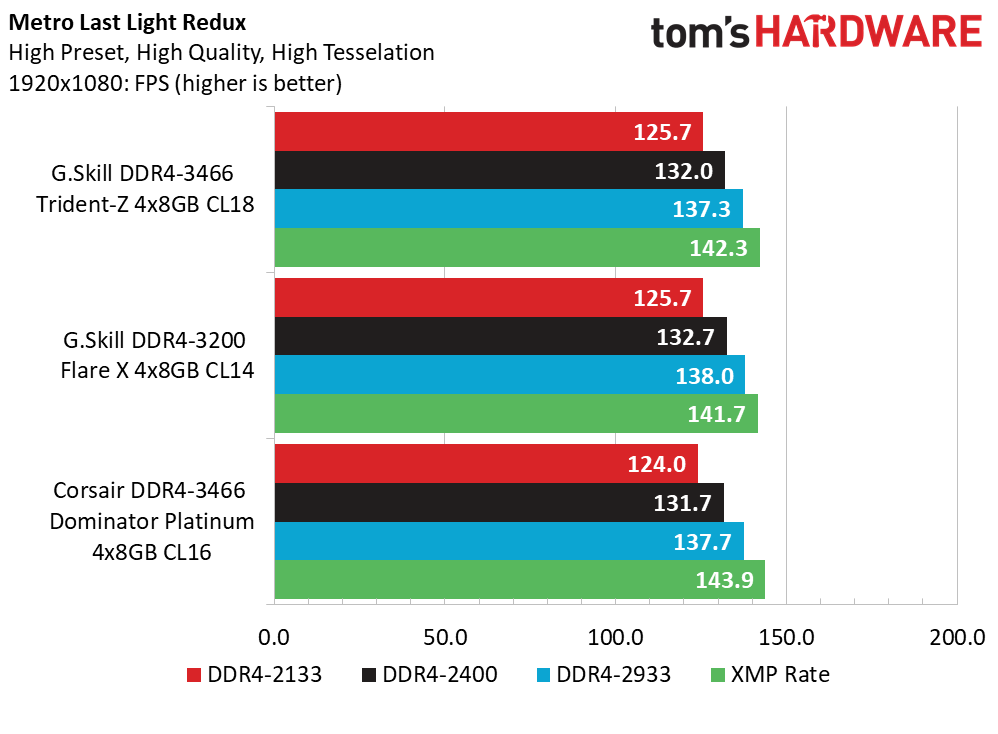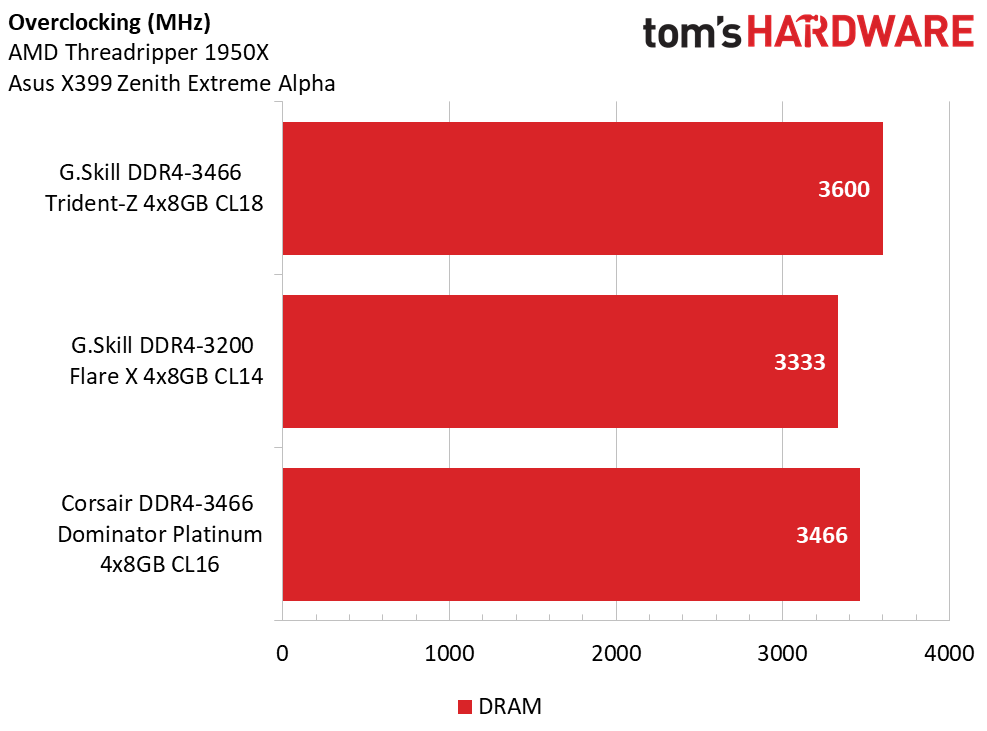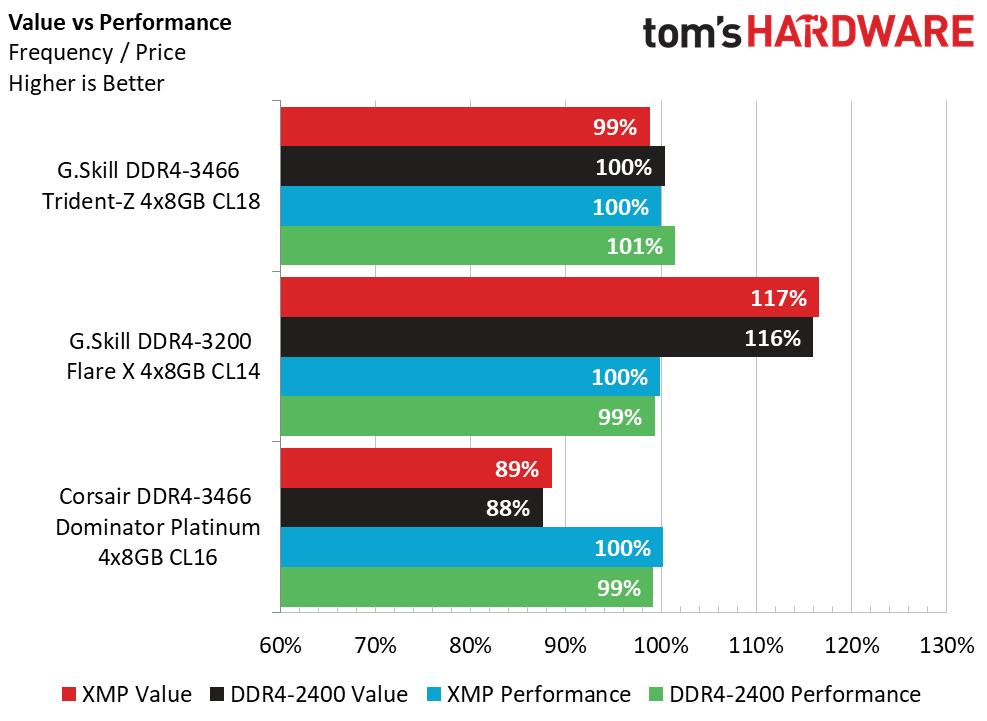G.Skill Trident Z RGB AMD DDR4-3466 4x 8GB CL18 Kit Review: Beautiful, but Average
Why you can trust Tom's Hardware
Performance, Overclocking, and Conclusion
Performance
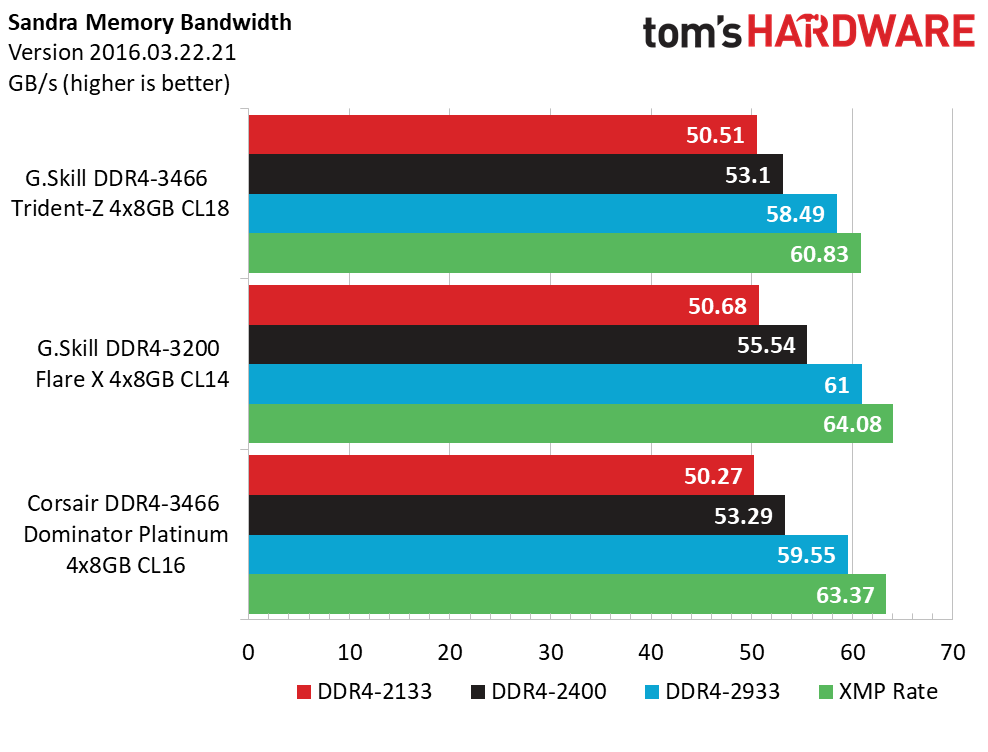
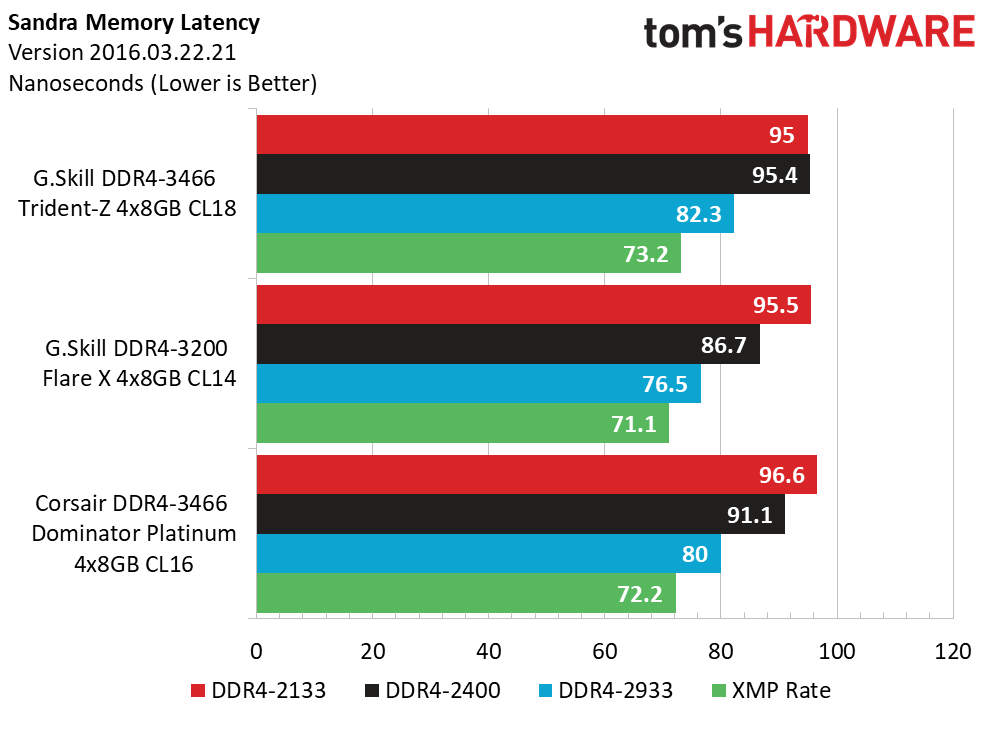
Starting our testing off today are our synthetic results from Sandra 2016. Memory bandwidth provided by our quad-channel interface is impressive for the most part. But the G.Skill DDR4-3466 kit struggles to keep up as we increase from the DDR4-2133 SPD data rate. What's interesting is that the DDR4-3200 Flare-X kit manages to squeeze ahead at XMP rates when compared against kits that have an additional 266 MTps in advertised data rate. This is likely due to the improved timings of the Flare-X kit. As data rate is also proportional to latency, we do see the same pecking order, with the Trident-Z kit still struggling to keep up past the default SPD rate.
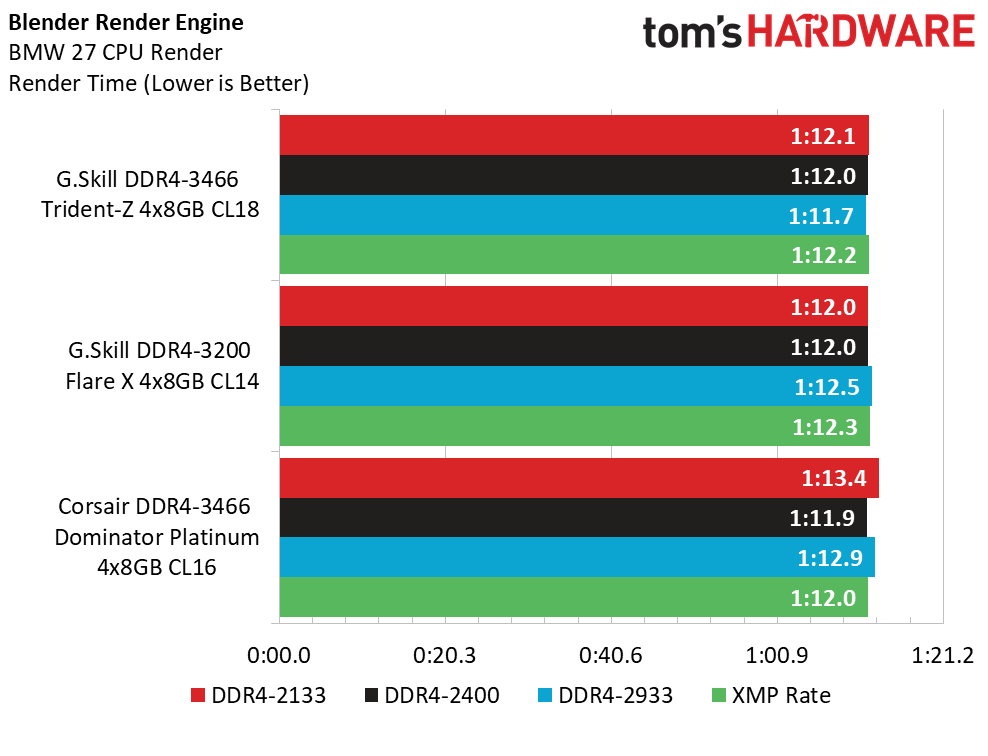
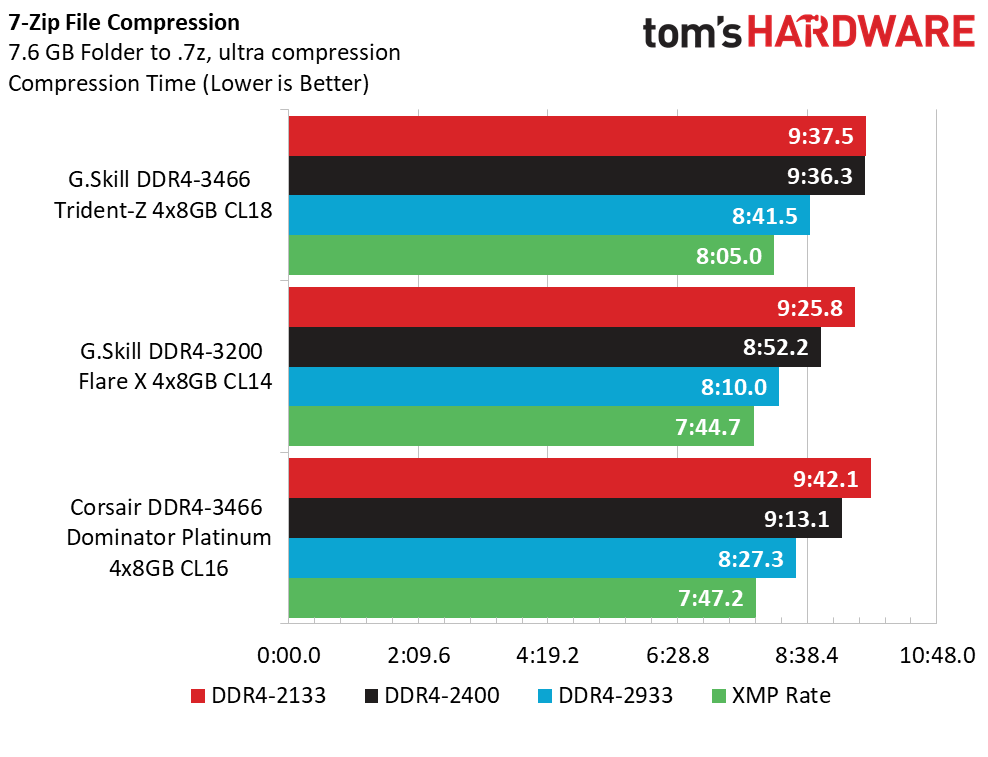
For the power users out there hoping that Threadripper would save their day, don't hold your breath that getting faster memory will help you in all applications. With Blender, we observe practically all results, regardless of data rate, coming within 2 seconds of one another. That ultimately makes this workload a "don't care" for memory performance analysis. On the other hand, compression with 7-zip loves the extra data rate, and we do see results that are on par with both Sandra workloads. Overall, this isn't a strong showing for the Trident-Z kit.
Shifting gears (pun intended) to F1 2015, we do start to see some glimmers of hope for the programmable RGB kit from G.Skill. As we report average framerates, the DDR4-3466 kits do manage to pull ahead of the Flare-X kit at XMP settings, but most users probably won't notice the difference of an extra 2-3 fps.
Metro is a more graphically dependent workload, but we do observe pretty straightforward memory scaling across the data rates and ultimately all kits are within a couple of frames of each other when comparing the average reported frame rate. It is interesting to note that the performance bump at DDR4-3466 from F1 2015 is not consistent with Metro and would suggest that we might be at the data rate limit for this game.
Overclocking
If you thought the silicon lottery was rough in the CPU world, rolling the dice in DRAM quality is even more erratic. For this G.Skill DDR4-3466 4x8GB kit, we were able to achieve an impressive DDR4-3600, albeit with CL22 timings. Our Flare-X kit has been known to top out at DDR4-3333 on a good day with decent timings, and our Dominator Platinums require additional timings (bumped to CL17) in order to reach a stable XMP rate on the Asus X399 Zenith Extreme Alpha. Overall, we are quite pleased with how far we could stretch the G.Skill sets of DRAM.
Conclusion
Each of these kits is able to reach a nearly 100% average performance metric when comparing the DDR4-2400 and XMP performance, respectively. With such similar performance, value comes down to cost. The Corsair Dominator Platinum High Contrast kit is set to an MSRP of $440 USD (and we're seeing it sell for about $408). Installing that kit clearly comes at a cost premium. On the other hand, we were able to find the Flare-X kit for sale four around $335 from a couple of different vendors. This Trident-Z kit then lands just a few dollars off the average of those two extremes. Additional searching also saw a CL16 variant of these DIMMs that might be worth looking at, since its prices are more in line with the Flare-X.
With that said, coupled with its enhanced aesthetics, ability to customize the RGB color schemes, advertised speeds, and overclockable performance, this kit is a decent choice for Threadripper builds, even if its tested performance and real-world price are both about average.
Get Tom's Hardware's best news and in-depth reviews, straight to your inbox.
Photo Credits: Tom's Hardware
MORE: Best Memory
MORE: DDR DRAM FAQs And Troubleshooting Guide
MORE: All Memory Content
- 1
- 2
Current page: Performance, Overclocking, and Conclusion
Prev Page Intro, Description and Test Setup-
Sn3akr How much does RAM even matter anymore.. at 3000 MHz+ the differences in performance is often 1-2 FPS, a second or 2 in blender. It seems to me it's more a question of looks and price. The days of gains from more expensive RAM is ancient history by now. Unless ur going for records it doesn't really become noticeable in daily use.Reply -
TheTerk if you're comparing DDR4-2666 or slower, you can sometimes get 5-10% performance improvement depending on the application (for example 7zip).Reply
As faster kits are becoming the standard for X570 and future platforms, these faster kits do make more of an impact and builders should lean to the faster kits (heck, even 3866 is within reason) -
Asryan I'm trying to find out if my F4-3466C16D-32GTZR is also hynix like the one on this topic, only difference is mine is CL16 and not 18. Any ideas?Reply
-
Crashman Reply
Most likely, considering that his were F4-3466C18Q-32GTZRXAsryan said:I'm trying to find out if my F4-3466C16D-32GTZR is also hynix like the one on this topic, only difference is mine is CL16 and not 18. Any ideas?
